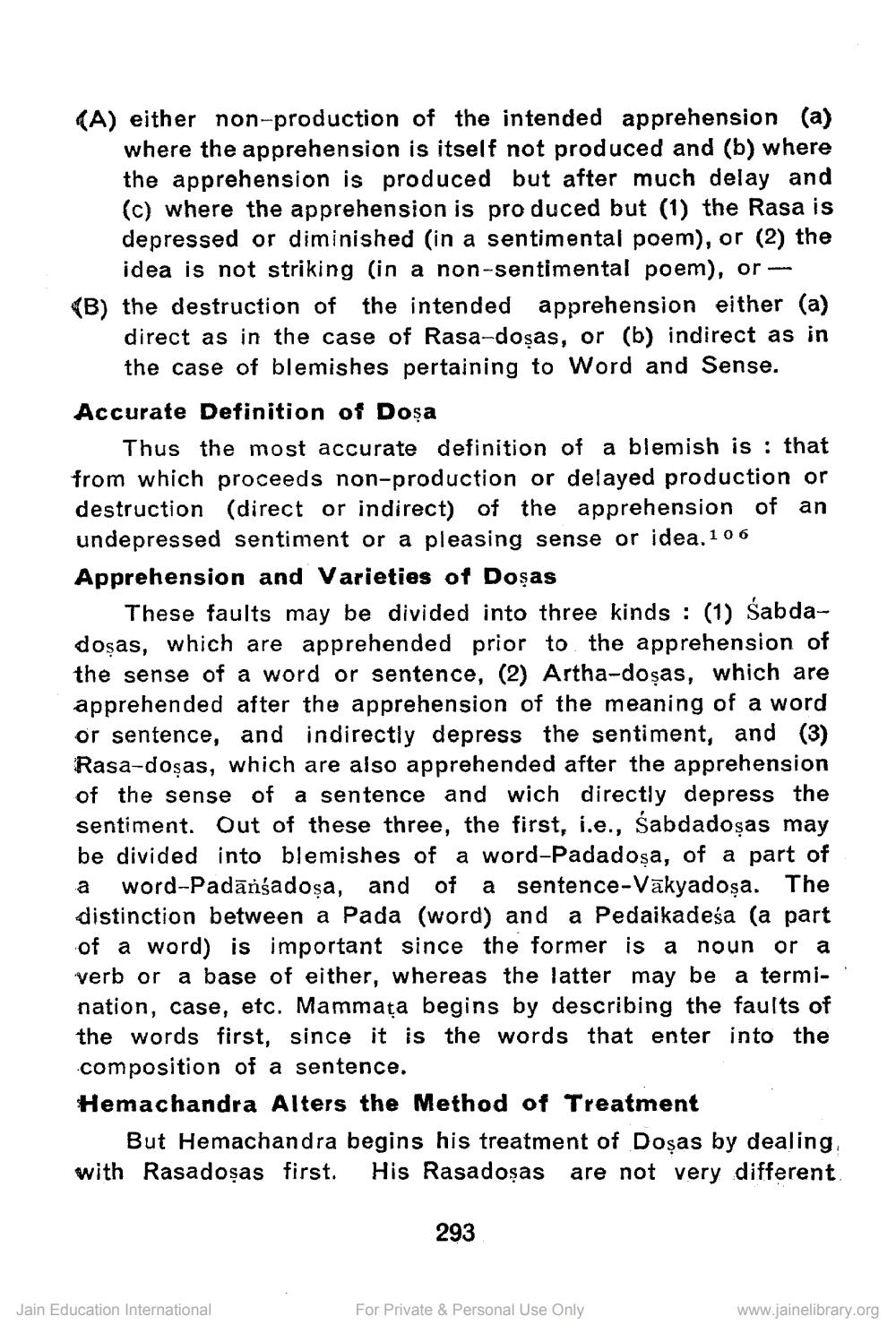________________
(A) either non-production of the intended apprehension (a)
where the apprehension is itself not produced and (b) where the apprehension is produced but after much delay and (c) where the apprehension is produced but (1) the Rasa is depressed or diminished (in a sentimental poem), or (2) the
idea is not striking (in a non-sentimental poem), or (B) the destruction of the intended apprehension either (a)
direct as in the case of Rasa-dosas, or (b) indirect as in
the case of blemishes pertaining to Word and Sense. Accurate Definition of Doşa
Thus the most accurate definition of a blemish is : that from which proceeds non-production or delayed production or destruction (direct or indirect) of the apprehension of an undepressed sentiment or a pleasing sense or idea. 106 Apprehension and Varieties of Doșas
These faults may be divided into three kinds : (1) Sabdadoșas, which are apprehended prior to the apprehension of the sense of a word or sentence, (2) Artha-dosas, which are apprehended after the apprehension of the meaning of a word or sentence, and indirectly depress the sentiment, and (3) Rasa-dosas, which are also apprehended after the apprehension of the sense of a sentence and wich directly depress the sentiment. Out of these three, the first, i.e., Sabdadosas may be divided into blemishes of a word-Padadoşa, of a part of a word-Padānçadosa, and of a sentence-Vākyadoşa. The distinction between a Pada (word) and a Pedaikadesa (a part of a word) is important since the former is a noun or a verb or a base of either, whereas the latter may be a termination, case, etc. Mammata begins by describing the faults of the words first, since it is the words that enter into the composition of a sentence. Hemachandra Alters the Method of Treatment
But Hemachandra begins his treatment of Doșas by dealing with Rasadosas first. His Rasadoşas are not very different
293
Jain Education International
For Private & Personal Use Only
www.jainelibrary.org




